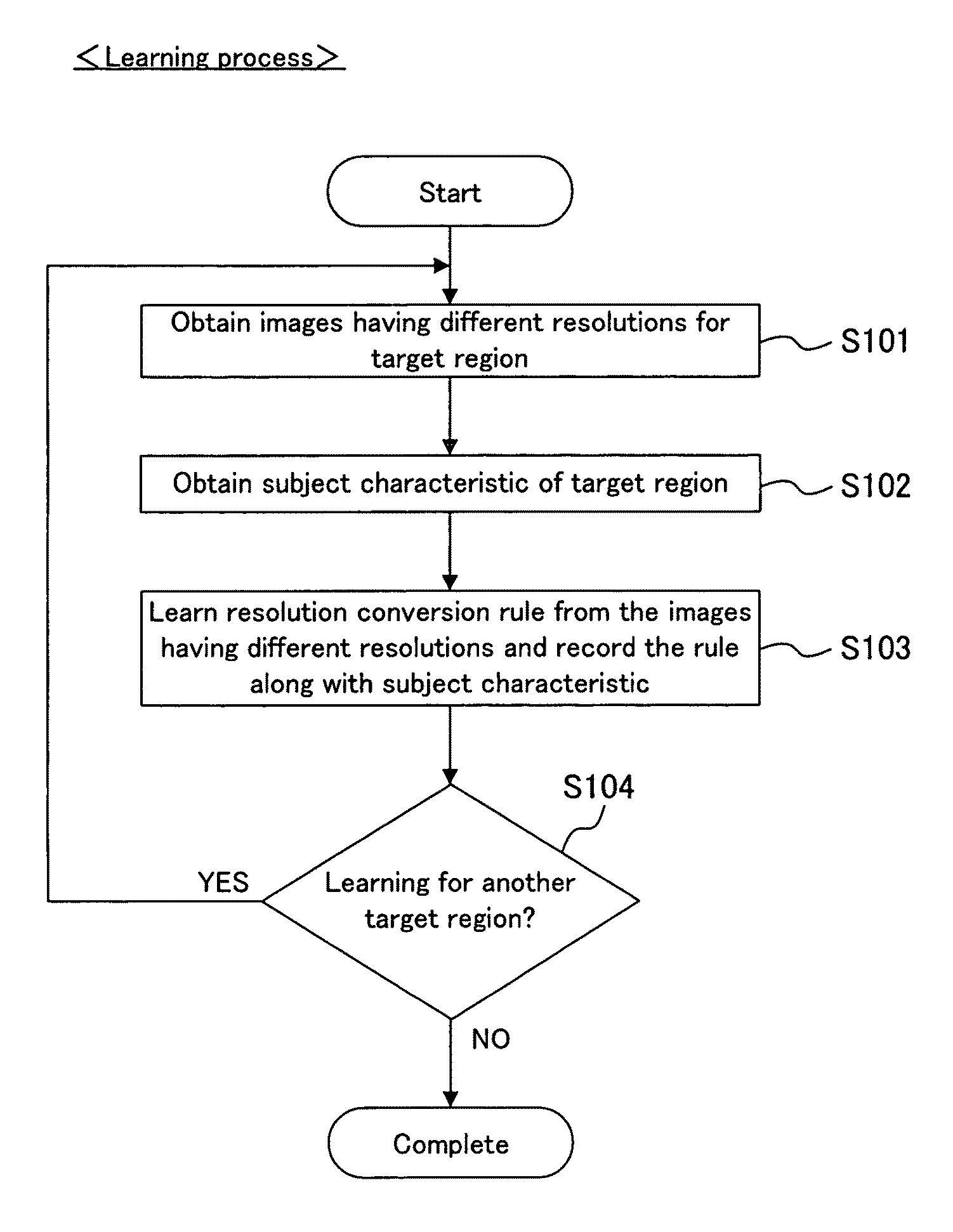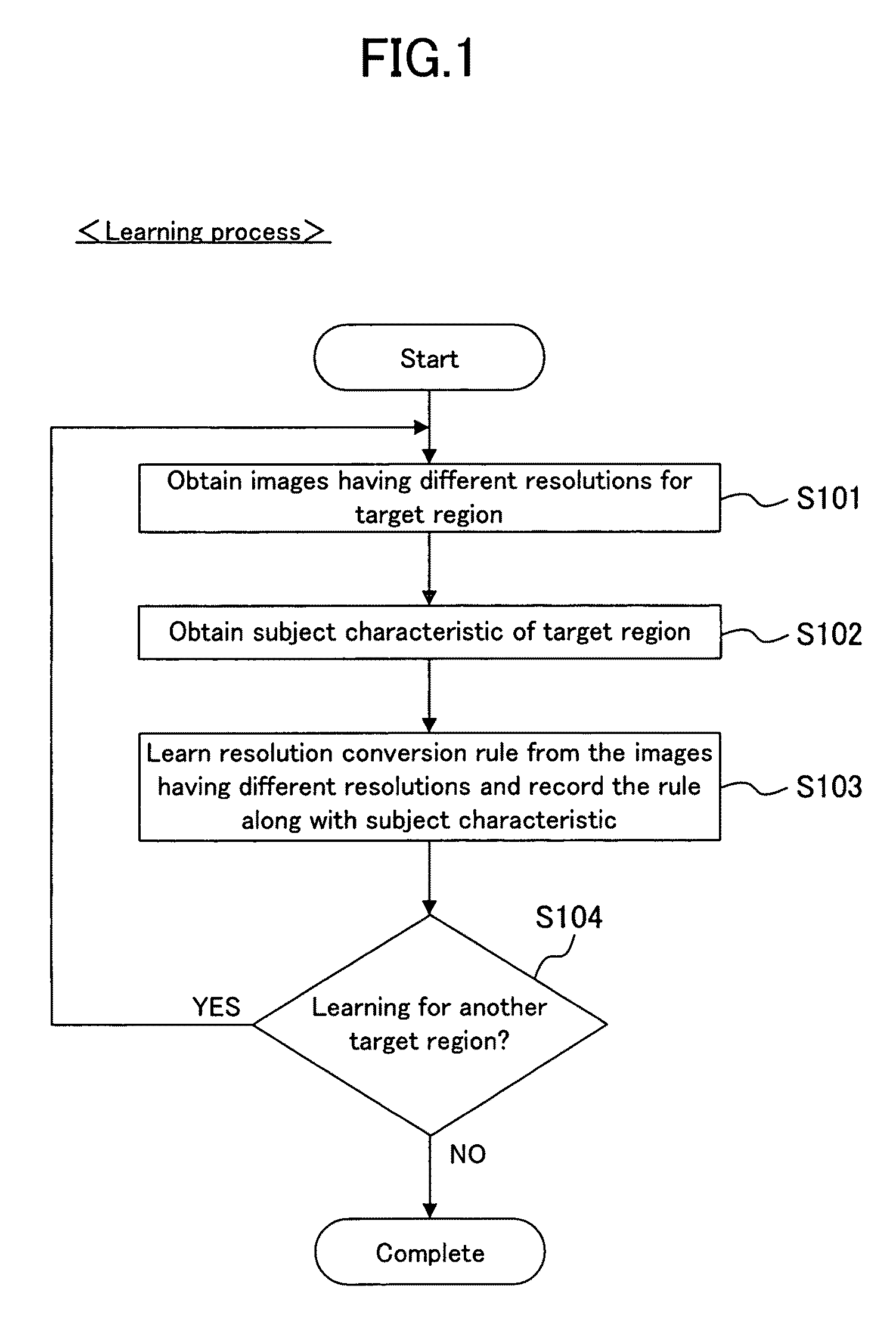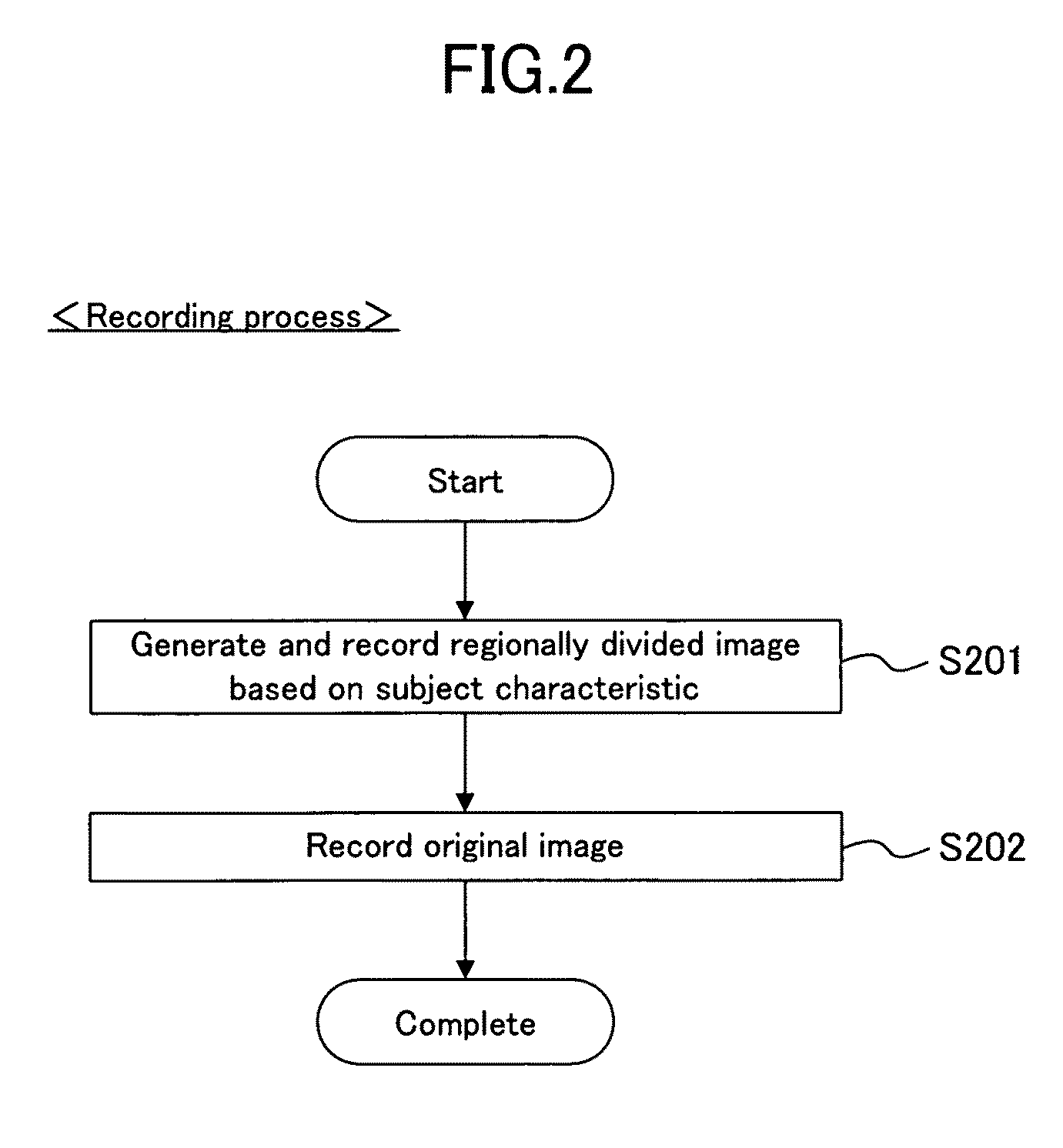Image processing method, image processing apparatus, image processing program, and image file format
a technology of image processing and image file format, applied in the field of image processing technique, can solve the problems of difficult manual operation, high-resolution image generation, complicated work, etc., and achieve the effect of high-resolution resolution conversion, high-resolution resolution conversion, and dramatic reduction of the processing amount of image processing
- Summary
- Abstract
- Description
- Claims
- Application Information
AI Technical Summary
Benefits of technology
Problems solved by technology
Method used
Image
Examples
first embodiment
[0098]FIG. 1-FIG. 3 are flowcharts showing an image processing method according to a first embodiment of the present invention. FIG. 1 shows a learning process, in which a plurality of images of a subject having different resolutions from each other are obtained, and resolution conversion rules are learned from the plurality of images by each subject characteristic. FIG. 2 shows a recording process, in which a still picture or a moving picture of the subject is obtained as an original image, and the original image is divided into regions based on the subject characteristics. FIG. 3 shows a resolution increasing process, in which the resolution of the original image is converted by applying, to the divided regions, the resolution conversion rules learned in regards to the corresponding subject characteristics. Resolution increasing processing of the recorded original image is achieved herein in order to perform high-resolution display thereof on a display.
[0099]The subject characteri...
second embodiment
[0108]In a second embodiment of the present invention, described is a specific image processing method, having the above-described first embodiment as the base. In this embodiment, an optical zooming method is employed for obtaining the images having different resolutions. Further, the spectral information of the subject is used as the subject characteristic, and the resolution increasing parameter, i.e. the parameter indicating the corresponding relation between the texture features of the image, is used as the resolution conversion rule.
[0109]FIG. 4 is a conceptual diagram showing examples of the learning process and the recording process. As shown in FIG. 4A, when filming a moving picture of a character, a target region TA1 (face of the character in the drawing) is set in advance in the learning process, and the optical zooming is performed by directing the optical axis of a camera CA towards the target region TA1. Thereafter, as shown in FIG. 4B, it is advanced to the recording ...
third embodiment
[0133]FIG. 17 is a block diagram showing an image processing apparatus according to a third embodiment of the present invention, which illustrates an example where the present invention is applied to a video movie camera. The image processing apparatus of FIG. 17 includes: a zoom lens 301; a zoom control portion 302; a visible light / spectral pickup portion 303; a spectral image generating portion 304 for generating a spectral image as a third image that is generated from the spectral information of the subject; a visible-light image generating portion 305; a material image generating portion 306; a texture feature converting portion 307; a learned region dividing portion 308; a learned region display portion 309 as a display portion such as a display; a material-region divided image recording portion 310; a texture feature learning portion 311; a resolution increasing parameter recording portion 312; a learning button 313; a recording button 314; and an image recording portion 315.
[...
PUM
 Login to View More
Login to View More Abstract
Description
Claims
Application Information
 Login to View More
Login to View More - R&D
- Intellectual Property
- Life Sciences
- Materials
- Tech Scout
- Unparalleled Data Quality
- Higher Quality Content
- 60% Fewer Hallucinations
Browse by: Latest US Patents, China's latest patents, Technical Efficacy Thesaurus, Application Domain, Technology Topic, Popular Technical Reports.
© 2025 PatSnap. All rights reserved.Legal|Privacy policy|Modern Slavery Act Transparency Statement|Sitemap|About US| Contact US: help@patsnap.com



